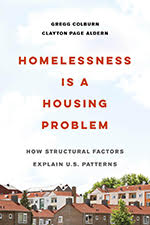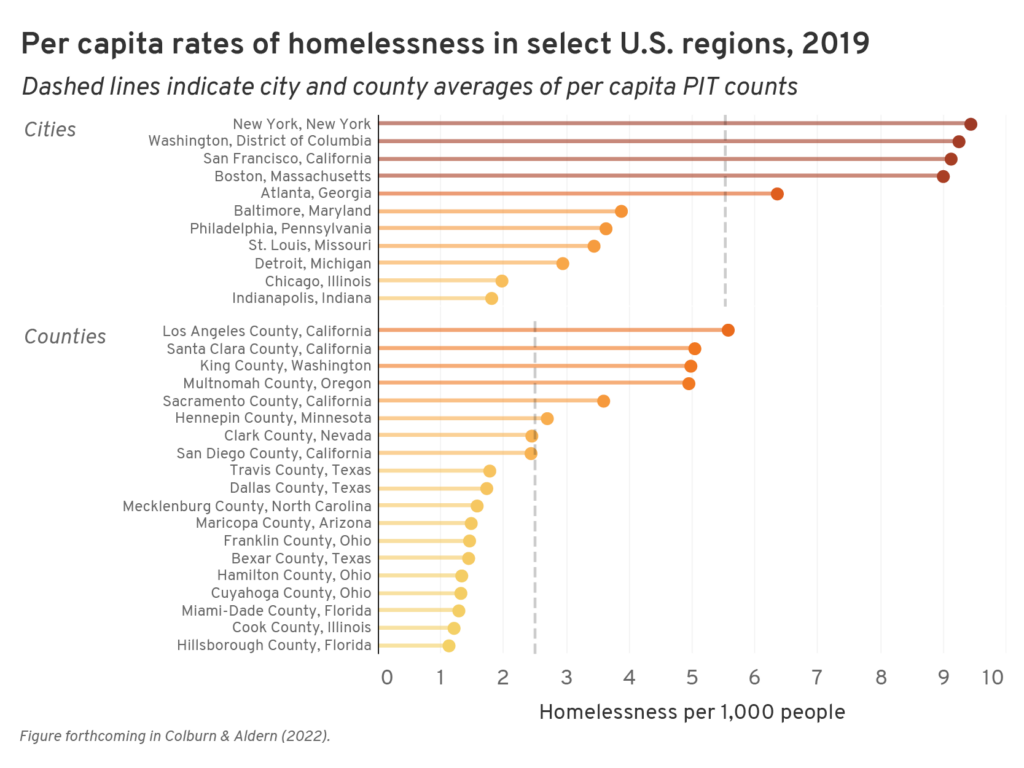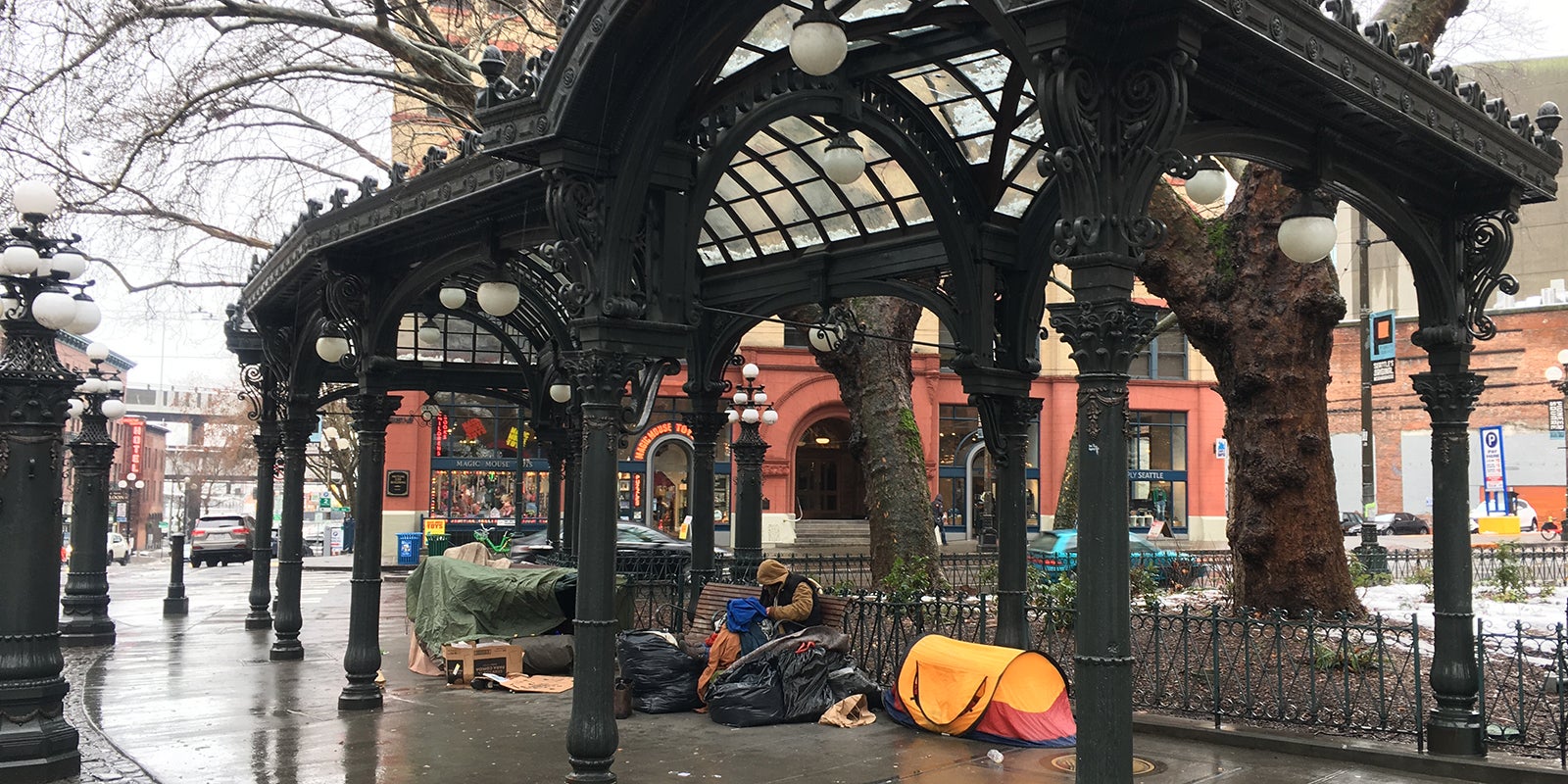
Gregg Colburn is assistant professor of real estate in the University of Washington’s College of Built Environments where he teaches courses in housing, economics, and finance at both the undergraduate and graduate levels. His research focuses on housing policy, housing markets, housing affordability, and homelessness.
He has published research on housing and homelessness in journals including Urban Studies, Housing Studies, Urban Affairs Review, and Housing Policy Debate.
Dr. Colburn will be speaking at Boise State University on November 9, 2022 at 9 a.m. in the Bishop Barnwell Room in the Student Union. The public is welcome to attend. The Blue Review interviewed Dr. Colburn about his work and his upcoming presentation. We’ve edited that interview for clarity and brevity.

TBR: The title of your upcoming presentation is “Homelessness is a Housing Problem.” Why do you refer to homelessness as a housing problem rather than a mental health or poverty issue?
Gregg Colburn: The title of my presentation is also the title of my recently-released book, Homelessness is a Housing Problem with my co-author, Clayton Aldern. The reason that we framed our book that way is that we spend the book trying to explain why some places have much higher rates of homelessness than other locations.
So, for example, Seattle has five times the homelessness of Chicago. And when we look at that, explaining regional variation and rates of homelessness is explained far more convincingly by housing market conditions, meaning where housing is expensive or in areas where vacancy rates are low than it is by who constitutes the population of a certain area. So, for example, Seattle doesn’t have more homelessness because we have more poor people or more drug addicts.
Because we end up getting so focused on these individual vulnerabilities, we lose sight of the fact that the general housing market context in which people live has far more explanatory power about understanding homelessness crises. So that was really the purpose of the book, and the purpose of these presentations is to center housing in conversations around the topic of homelessness.

TBR: What can cities or regions do to better address the root causes of homelessness?
Gregg Colburn: There are a few different things. The way I like to describe it is that there are all sorts of levers that governments can pull to make a difference here. On one side of the equation we need a lot more development of housing, even by private sector actors. And governments can help to facilitate that through changes to land use, thinking about what kind of housing can be built on what parcels, as well as the regulatory framework in which housing is constructed.
There are places where it’s hard to build housing, like Seattle and San Francisco because of the regulatory environment. Land use tends to be fairly restrictive in the sense that we rely almost exclusively on single family zoning. And so those are some levers that we can pull at the local level to hopefully make it easier for more market rate housing to be built.
We also need to acknowledge that market rate housing will not be accessible to some portion of the population because of the costs associated with that housing. It doesn’t mean that we shouldn’t build that housing. We should. But we also need to recognize that that alone is an insufficient solution, and therefore there will be a need for public response of public resources to help either construct housing that’s affordable for people with lower incomes. Or to provide subsidies to people so that they can access more expensive housing.
The regulatory side of things happens at the local level. The other side of things can happen at the federal level, state level, county level and city level. And to a certain extent what has happened is the Federal Government has taken a step back from supporting low income households over the last forty years which has really pushed these housing issues down on lower levels of government, meaning states and typically counties and cities.
So that’s what we’re facing right now. It is a really big housing crisis in a lot of places, including places like Boise, where populations are growing. Rents are going up, and now we’re faced with the challenging situation of what can we do at the local level? Even if we don’t necessarily get support from Washington, D.C. or the State of Idaho, we still need to figure this out, and that’s what some of those levers are on both the regulatory front as well as the resource front.
TBR: You haven’t always worked in academia. Could you tell us how your time in the private sector informs your current research?
Gregg Colburn: My first career was in the financial markets. I was an investment banker and private equity investor. I spent seventeen years in the market, so I definitely bring an understanding of – and an appreciation for – markets to my work. And that appreciation is not that markets can solve every problem.
I think markets do a lot of great things. They help with innovation. They help with getting goods and services out to people. They do wonderful things. But also just a recognition that free market mechanisms, for example, are probably not ideally suited to constructing housing for people with no incomes.
That doesn’t mean that markets are bad. It just means that they’re not well suited to that particular tool. And so I frame the book in the context of housing market conditions, which is largely a private housing market in the United States where two or three percent of all housing units are publicly owned or publicly subsidized. Generally speaking, we have a private housing market in the United States.
And so I center the conversation around homelessness in that market context and say here’s the situation: the market dynamics help us explain this crisis, and therefore what do we do to get out of that crisis? There’s a role for the market, and there’s certainly a role for the government. And so I would say that understanding and appreciating the power and the implications of markets has a big role in the way I think about my work as a housing researcher.

Seattle has five times the homelessness of Chicago. And when we look at that, explaining regional variation and rates of homelessness is explained far more convincingly by housing market conditions… So, for example, Seattle doesn’t have more homelessness because we have more poor people or more drug addicts.
Gregg Colburn
TBR: What, if anything, makes you hopeful when it comes to tackling the problem of homelessness?
Gregg Colburn: Certainly thinking about homelessness every day can be a depressing exercise, especially when you see rates of homelessness increasing in a lot of cities, especially in the western half of the United States.
And it’s easy to get down. Obviously they are really good and talented people are devoting their entire lives to this.
I would say that the optimistic side of things really relates to the fact that when we do have the political will and the resources devoted to this problem we can make a significant difference.
About twelve years ago the Federal government decided that they didn’t want to have veterans coming back from Iraq and Afghanistan experiencing homelessness at the really high rates which they were.
And that is a bit of a repeat from what happened with the Vietnam generation when they came back from the Far East. Lots of most traumatic stress and ongoing mental health challenges and housing instability. And so leaders of both political parties in Washington, D.C. said we don’t think that it’s right for these folks who served our country to experience homelessness.
And so what we did was we devoted time, resources, and energy to ensuring that that should happen and we cut veteran homelessness by fifty percent in the United States over ten years.
And so when people say to me, Greg how do we know that housing will end this? You’re claiming that homeless is a housing problem. How do we know the housing will end homelessness? I’ll say, well, we cut veterans homelessness by fifty percent. And how did we do that? We gave people housing.
And so to me that is a really strong signal that the interventions that we use to end homelessness do work. The question is, will we extend those interventions and expand the provision of those resources to a broader population to ensure that we can also make a similar dent in the broader population of people experiencing homelessness including those who haven’t served in the armed forces?
That is what gets me excited in the sense that we can do this. We have done it. It’s just a question of will we do it at scale.
TBR: Can you tell us a bit about your presentation at Boise State?
Gregg Colburn: I’m really excited to come to Boise. I’ve had a chance to speak with a number of leaders in your community. I think it speaks to the growing housing challenges around the United States. Much of our book focuses on Seattle, San Francisco, L.A., Boston, New York and D.C. where homelessness has become a huge, huge problem. I’ve been invited to Sun Valley. I’ve been invited to Boise, I’ve been invited to Spokane. I’ve been invited to Columbus, Ohio, places that are now experiencing rapid population growth, and they’re seeing that population growth putting stresses on the housing system.
And so my two days in Boise, including at Boise State University, are going to be a great opportunity to talk about what we have learned from larger communities, and what lessons can we then learn from that, and then apply to a situation like Boise, Idaho.
And so that’s why I’m excited to be there and to interact with faculty and students and folks who care about this issue as your community goes through some pretty dramatic changes.
I kind of joke that I’m to a certain extent the canary and the coal mine. Which is to say, you can ignore these issues for the next decade, and be where Seattle is. Or you can get out in front of these challenges. And that’s what I’m really hoping to communicate not only to the students and faculty of Boise state, but to other community leaders within the city and surrounding areas of Boise.
Feature image: Homeless encampment under the onramps, overpass, tents, Highway 5, Seattle, Washington. Photo credit: Wonderlane, Flickr Creative Commons.